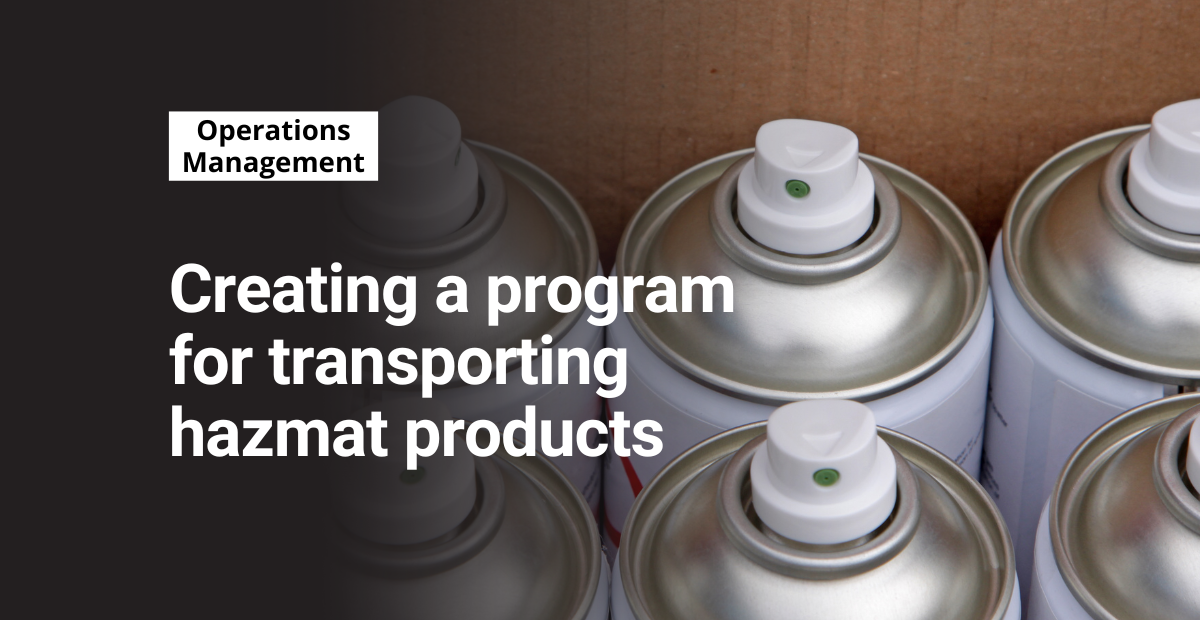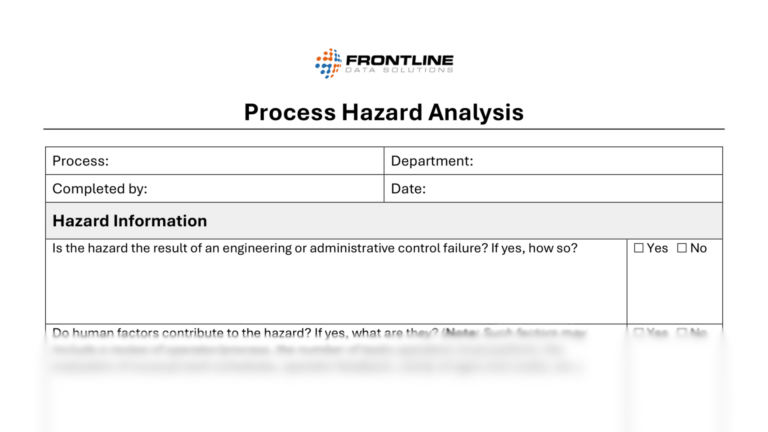In terms of managing a successful hazmat or dangerous goods program, there are several key components to drive success and consistency across a business. Incorporating these variables in your program ensures that your workers understand the best methods of transporting hazmat products safely.
Free form!
Assess the safety of your processes using this form template. Make it site-specific so it’s even more insightful.
Training workers how to transport hazmat
Training, and maintenance of training records is the first step to a consistent program. Your training will need to follow regional standards. This includes (but is not limited to): DOT, IMDG, IATA and ADR. If your employees are also expected to manage material that is considered waste products, then they will need RCRA training (US waste only).
Because you must ensure that training is completed in the proper timeline, use the central recordkeeping system your company has. Many companies are switching over to digital data management systems.
Even if you conduct classes through a 3rd party, it’s an excellent idea to store all your records in a centralized system. This helps to ensure that there is a more peaceful and direct transfer of knowledge from one employee to the next, thus reducing the risk to your operation.
If you don’t already have all your training courses loaded into the system, this is an excellent launch point. I also recommend that you have two training classes loaded for each training type. For example, have the classes loaded into your system as below:
- DOT Initial
- DOT Refresher
- IMDG Initial
- IMDG Refresher
- IATA Initial
- IATA Refresher
- ADR Initial
- ADR Refresher
- RCRA Initial
- RCRA Refresher
If your company does use a total waste provider, you can check to see if DOT and RCRA training are included in a portion of the contract. If they offer this training as a course, please note that oftentimes this training is sufficient for teaching employees how to properly ship and manage parts or products.
Hazardous parts management
If you have a known list of products that your company sells regularly, the best practice is to have a list available of the parts that are known to be hazardous and require documentation. In the given market where many companies are seeing increased levels of attrition, ensuring that your employees feel that they have all the tools to succeed is key.
Having a regular interface where information is available to employees also gives your business a layer of protection, and it also gives the program manager peace of mind. It’s critical to teach your employees that they should not ship any parts that aren’t listed in your database, and that they should notify the program manager if they come across unlisted parts.
Additionally, you shouldn’t expect employees to know how to generate the necessary information to ship physical products unless you’re willing to pay them for the extra work. Compensation should be in line with the level of risk associated with the work being performed.
Creating a database of hazmat parts and products
Below is a list of common fields that should be recorded for each part number to maintain an easy part reference list:
- Part Number
- Part Description
- Basic Description (ISHiP)
- Land (49 CFR)
- Land (ADR)
- Air (IATA)
- Ocean (IMDG)
- Flash Point
- ERG
- DOT-SP
- DOT-SP EXP
- Qty
- Inner Packaging
- Storage Requirements
- SDS
To maintain this list, a common practice is to gradually move away from tools like Excel. That’s because it’s not hard to bookmark an Excel link to a desktop and have the live link break, leading to outdated data.
Instead, a collaborative tool like SharePoint Lists or Google Workspace, where the information saves and backs up automatically, is a better choice.
Employees can bookmark these storage systems directly to their desktop just like they do with Word documents or Excel files. The benefit to your business is that new bookmarks will direct them into the live system, meaning that if you push out a change, the change will be visible once the server receives it. This decreases your risk of losing critical data for transporting hazmat materials.
Inside the database for each part number, you can have a link that ties to the BOL. You can print all the information you need to share directly from your database. And that process reduces risk and helps to effectively manage your program.
You can find detailed information on requirements for shipping and transporting hazardous materials in the Code of Federal Regulations (49 CFR Subchapter C: Hazardous Materials Regulations).
Equipping employees to ship hazmat materials
If you don’t already have a hazmat shipping system, you need one. Once you create this system, make sure you train employees how to use it well. Employees are more likely to stick around if they feel valued and protected. Giving them clear expectations will help prepare your employees to perform tasks safely.
In the post-Covid era of supply chain issues and worker shortages, reducing employee turnover is more essential than ever. It doesn’t matter if your team has the best engineers, developers, scientists, doctors, etc. if they can’t properly transport hazardous materials.
Clear communication, comprehensive training, visible programming, and accessible tools are the key components of a successful hazmat program. Failure to execute in one of these areas can expose your hazmat program to risk.
Risks include: increased turnover, lack of knowledge, compliance gaps, and lack of awareness in terms of which products are hazardous. In an ideal situation, there should be at least two salaried employees running a hazmat multimodal compliance program. In the case of turnover, you’ll have at least one employee who knows the status of your hazmat program.




